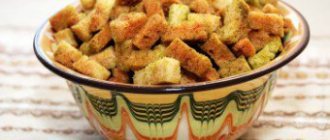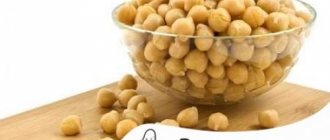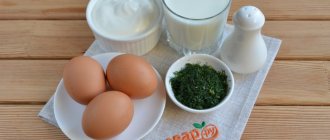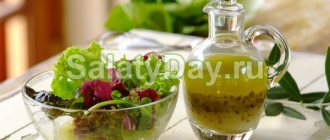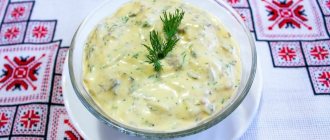Hummus is a dip spread traditionally made from chickpeas. Hummus is actually the Arabic word for chickpeas. It is also one of the oldest foods known to mankind, dating back to Ancient Egypt.
Hummus is one of the most famous foods in the Middle East, thanks to its popularity throughout the world. This chickpea dish can be found in most grocery stores and on many Middle Eastern restaurant menus.
If you frequent Middle Eastern restaurants and eat hummus, you know that hummus tastes different everywhere. Some hummus have a zesty lemon flavor, some have a strong garlic flavor, some hummus dips are mild and others are spicy. When you make your homemade hummus, you should consider your own preferences. Part of the fun of making hummus is that it's a versatile recipe that you can easily adjust to suit your own cooking preferences.
Hummus is ideal for enjoying as a snack with pita wedges, crackers, tortilla chips or chopped vegetables. You can also use it as a flavorful condiment for sandwiches and wraps. Plus, you can even freeze hummus.
When serving hummus as a dip, you can drizzle a little olive oil on top or sprinkle with Parmesan cheese or red pepper flakes for a more interesting presentation. Other additions include roasted garlic, preserved lemon, chili oil, green salsa and smoked paprika. Serve hummus in brightly colored bowls to add excitement.
Here are some great hummus recipes that use a variety of ingredients to make traditional Middle Eastern hummus even more appealing.
Classic Hummus
Want to make classic hummus that has been popular for centuries? The traditional recipe for this Middle Eastern sauce includes tahini (sesame paste). Tahini gives hummus its characteristic nutty, fatty, and slightly bitter taste. Resist the temptation to jump straight to other recipes, start with the classics.
Classic Hummus
How to make hummus
How to cook chickpeas
Soak the chickpeas in cold water overnight or for at least 8 hours. The water should be several centimeters higher than the chickpeas.
Drain and rinse the chickpeas well. Fill it with clean water and cook over low heat for 1.5–2 hours until the grains become soft. Add a little salt 10 minutes before the end of cooking.
Well-cooked chickpeas should soften easily when pressed.
Pour the liquid in which the chickpeas were cooked into another container. Pour cool water over the chickpeas and rub them with your fingers to remove the skins. Then carefully drain the liquid from the husks.
You can skip this step, but without the husk the hummus will have a smoother consistency. This will not affect the taste in any way.
How to make tahini
Sesame paste can be purchased, but it can be difficult to find. But preparing it is not at all difficult.
Ingredients
- 80 g sesame seeds;
- 1 tablespoon sesame or olive oil;
- salt is optional.
Preparation
Place sesame seeds in a preheated frying pan and fry, stirring occasionally, over medium heat until slightly golden brown.
Grind the cooled seeds in a blender, add oil and salt and continue blending until smooth. You should end up with a slightly runny paste.
How to make hummus
Place the tahini in a blender, add the juice of a whole lemon, olive oil, salt and cumin and blend lightly. By whisking the tahini first, you make the sesame paste creamier. Then add chickpeas in parts and beat with a blender until smooth.
While doing this, add some of the liquid in which the chickpeas were cooked. You should have a thick, creamy paste. It can be salted to taste.
Hummus with roasted red peppers
The sweetness and smokiness of roasted red peppers makes a fantastic way to take the flavor of a traditional hummus recipe up a notch. An easy hummus recipe made in a food processor uses store-bought or homemade roasted red peppers to add extra flavor.
Hummus with roasted red peppers
The benefits and harms of hummus
Another topic I want to touch on is the benefits and harms of hummus. I see that many people are very interested in this topic. On the one hand, hummus is considered a fairly high-calorie dish, but it contains a very large amount of vegetable protein. This is why vegetarians and people who are gluten intolerant love hummus. It also contains a lot of iron and unsaturated fats.
It’s worth talking about calorie content as a separate point because it all depends on how you prepare hummus, and what proportions you use, how much chickpeas, tahini (sesame paste, which is high in calories) you put in, as well as all kinds of additives, for example, pine nuts, olive oil, fried onions and peppers, sun-dried tomatoes, etc. And hummus contains about 10% of the daily value of dietary fiber, minerals and vitamin B 6.
What can you say about the dangers of hummus? My opinion is that everything “should be in moderation”, this applies to food in particular. Nowadays, everyone just trumpets about the dangers of a variety of products, but there are so many opinions that, frankly, you don’t even know what to believe, so I think that everything should be in moderation. If you constantly eat hummus in large quantities, then all its benefits will come to naught, you will consume a lot of calories and gain weight, but who needs that??? So, everything in moderation, friends.
Tips for making homemade hummus
1To make the hummus tasty and boil well, it is recommended to soak it for at least 3 hours, but it is better to soak it in the evening and start preparing the hummus in the morning.
2Choose medium-sized hummus grains, so it will cook faster.
3When cooking chickpeas, add 1 teaspoon of soda to the water, this will make the chickpeas softer.
4I saw an advice on YouTube from the owner of a hummus shop - he advises not to grind hummus in a blender or food processor, but to do it in a mortar. According to the owner, the hummus turns out more delicious this way, because it is prepared by hand and with love. But many don’t want to bother so much, and use the benefits of civilization in the form of a blender.
5Another question from many Internet users is whether it is possible to make hummus from chilled chickpeas, and whether the taste will be different. So, this is how hummus owners store boiled chickpeas in the refrigerator, and then take out the required amount of chickpeas, add the necessary ingredients and make chickpea paste, i.e. hummus.
6Do you always need to remove the film from chickpeas after cooking? The answer is simple, if the chickpeas are small and the skin is thin and not hard, then you don’t have to do this. But I usually take it off.
7 And finally, to prepare good hummus, and in Israel they prepare hummus from chickpeas exclusively, take good and high-quality products, and also follow the preparation recommendations.
Black bean hummus
Southwestern cuisine takes on a Middle Eastern favorite in this protein- and antioxidant-rich hummus recipe that uses black beans instead of the traditional chickpeas. Serve this delicious snack with crackers or tortilla chips.
Black bean hummus
Basic hummus recipe
The most delicious hummus can be made if you take all the required ingredients. The classic cooking recipe includes chickpeas, tahini, olive oil, garlic, salt and ground black pepper. Of course, at home, instead of sesame paste, you can take chickpea decoction. But the result will be different; it is still better to add tahini.
Ingredients:
- Sesame paste – 15 g.
- Chickpeas – 1 tbsp.
- Garlic – 2 teeth.
- Lemon juice – 0.75 tsp.
- Olive oil – 20 ml.
- Spices - to taste.
- Salt - to taste.
How to prepare:
- Pour cool water over the peas and leave for 12 hours. Then boil the chickpeas until tender, it will take about an hour.
- Drain the broth from the chickpeas. Add hot spices, salt, citrus juice, oil and paste to taste. Peel the garlic, rinse with water and place in a saucepan.
- Using a blender, puree the mixture into a puree consistency. Transfer the hummus to a serving plate and garnish with fresh herbs or chopped herbs. Serve this lean appetizer at the table, you can eat it with a slice of feta cheese.
NOTE: You can also make hummus from canned chickpeas.
Sun-dried tomato hummus
Sun-dried tomato hummus is super easy to make and a great way to add variety to your appetizers at parties and picnics. Just a few ingredients go into this easy hummus dip recipe that you can whip up in minutes in your food processor.
Sun-dried tomato hummus
How to make hummus in a slow cooker
Nowadays, you can easily and simply prepare various dishes in a slow cooker at home. This includes chickpea hummus. I would like to note that it is quite convenient to cook peas using this technique; you do not need to monitor them. As a rule, cooking will take approximately 2 hours if you use stewing. The cooking recipe includes the following products:
- Tahini – 2 tbsp.
- Chickpeas – 120 g.
- Cumin – 0.25 tsp.
- Lime juice – 2.5 tbsp.
- Olive oil – 35 ml.
- Garlic – 1 tooth.
- Black pepper - to taste.
- Table salt - to taste.
Way:
- Soak the peas in water for about 7 hours. Pour into a multicooker, fill with clean water. Activate the “Stew” option for 120 minutes. Separate the broth.
- Add sesame paste, lime juice, pepper, and salt to the hot chickpeas. Press the garlic through a press and add it along with the oil.
- Using an immersion blender, puree the mixture until it reaches a homogeneous consistency. You can serve this Lenten snack in a small bowl with pita bread or pita bread.
Cauliflower hummus
Cauliflower hummus is a low-carb, keto twist on traditional hummus made with chickpeas. The cauliflower adds a subtle flavor, while the tahini and olive oil give it that classic silkiness. The paprika and cumin give it a smoky flavor that complements the sweetness of the roasted cauliflower. (You can boil it.) Use it as a low-fat sauce on your favorite sandwiches, pitas, or even on ciabatta. This is perfect for your next lunch, party or dinner in the evening.
Cauliflower hummus
Jewish style hummus
We present to your attention an Israeli recipe for making chickpea hummus. The distinctive ingredients are baking soda, cilantro and cumin. If your budget does not allow you to purchase sesame paste, then you can make it at home.
Ingredients:
- Sesame seeds – 45 g.
- Garlic – 3 teeth.
- Olive oil – 5 tbsp.
- Lemon juice – 30 ml.
- Chickpeas – 1 tbsp.
- Zira – 0.5 tsp.
- Cilantro – 6 branches.
- Hot paprika - to taste.
- Baking soda - on the tip of a knife.
- Salt - to taste.
Option:
- Boil chickpeas soaked in water in advance until soft in a large amount of liquid, add a small amount of soda. Drain the peas in a colander, leaving a small amount of broth.
- You can make tahini paste while the peas are boiling. In a dry frying pan, fry the sesame seeds until golden brown. Using a coffee grinder, grind the seeds into a puree. Pour in a couple of tablespoons of olive oil, stir until smooth.
- Pour the peas into a blender container, add the paste, juice, cumin, vegetable oil, chopped garlic and cilantro. Punch until smooth. If the mass is too thick, you can add a little broth. Sprinkle the appetizer with hot or sweet paprika and serve.
Jalapeño Hummus
To add some extra flavor to your hummus, add some jalapeño to the mixture. Jalapeño peppers pack a punch of flavor that adds a fresh twist to your typical hummus snack. You can up the heat in this recipe by adding jalapeño seeds or reserving them for a milder flavored sauce.
Jalapeño Hummus
What is hummus?
Many of you probably don’t even know what hummus is, what kind of food or recipe it is, or even what it is. Recently, people have become more aware of various issues, and in particular the names of dishes from different cuisines, as well as cooking recipes. So, let's get back to our hummus!
Hummus is a very popular dish in the Middle East, which is made from chickpeas; in Israel, chickpeas are called hummus, and the dish itself, made from hummus, is also called hummus by the Israelis. It is a kind of snack that is eaten in different variations. Hummus is similar in appearance and consistency to a spread that you can spread on bread and eat like that. But, personally, I don’t recommend starting your acquaintance this way (meaning trying it with bread) with hummus. Below I’ll tell you how to try hummus so that it remains in your heart forever.
Chickpeas are a grain legume from the legume family. Chickpeas taste a little different from regular peas in their taste and even smell.
The first mention of hummus appeared in the 13th century in Arabic cookbooks. This is probably where the story of hummus came from. It is interesting that in addition to Arab countries, the Middle East and the Mediterranean, where hummus is one of the main national dishes, it has become popular among Americans, especially vegetarians. Yes, what can I say, if in the last 5 years few people in our countries knew anything about hummus, now people know, love and prepare hummus.
Hummus in Israel is a national food, and probably not a single meal in an Israeli family is complete without this spread. In restaurants, eateries, street food outlets, well, just everywhere you can taste this dish. In Israel, it is prepared exclusively from chickpeas, and there are even entire establishments called “hummusiyot” or “hummus places” - where you can taste real, freshly prepared hummus. As a rule, it is still hot, but this is its charm, what makes it different from store-bought.
You can also buy hummus in any supermarket in Israel; it is sold already chilled, of course, and the companies that produce it prepare it according to their own recipes.
Classic recipe for making hummus at home
We need: a colander, an immersion blender.
Ingredients
| water | 85 ml |
| canned chickpeas | 405 g |
| olive oil | 75 ml |
| sesame seeds | 10 g |
| garlic | 2 cloves |
| lemon juice | 10 ml |
| salt | 3 g |
| nutmeg | 1 g |
| coriander | 2 g |
| dried paprika | 2 g |
Step-by-step preparation
- We rinse 405 grams of canned chickpeas under running water and place them in a colander so that the excess liquid is completely drained.
- Transfer the washed chickpeas into a blender glass and blend. Add 10 grams of sesame seeds, 85 milliliters of water and mix thoroughly again to form a smooth, creamy mass.
- Pour 75 milliliters of olive oil, 10 milliliters of lemon juice into the resulting mass, add 3 grams of salt, add 2 chopped cloves of garlic and mix so that all components are evenly distributed.
- Finally, add 1 gram of nutmeg, 2 grams of coriander, 2 grams of dried paprika and blend the whole mass with a blender.
- Transfer the finished hummus into a convenient bowl and serve.
Video recipe
To clearly see what consistency the finished dish should have, we recommend that you carefully watch the following video.
